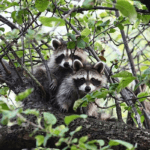Birds of all shapes, sizes, and varieties can be found all over the world. For our list of birds whose names begin with Y, we only included a tiny sample of 17 different species.
Birds That Start with Y – List of Birds Begins with the Letter ‘Y’

Many of the birds on our list are named after either a region of the world they are from or the color yellow, which is a less common use of the letter Y in bird names.
Let’s look at it! Here is the list of bird names that start with Y.
Yucatan Woodpecker
Scientific name: Melanerpes pygmaeus
The Yucatan Peninsula in Mexico is home to this woodpecker, also known as the red-vented woodpecker. With a pale head and breast, they have a back and wings heavily striped in black and white. Both sexes have yellow above the beak, and males have red at the back of the skull which is more pronounced.
These woodpeckers prefer sand and brushy areas in forests. They search for insects in trees and bark like the majority of woodpeckers, but they will also consume fruit.
Yellow Warbler
Scientific name: Setophaga petechia
The yellow warbler, as its name suggests, has yellow feathers all over its body. While their back can be deeper, olive yellow, their breast and head are often brighter. On their breast, males have some reddish-brown striping. Yellow warblers move up into the Canada and United States to breed in the spring after spending the winter in Central America and northern South America.
They only eat insects and prefer to live in thickets and tiny trees close to marshes or streams. Because they are so little and light, these birds have been noted to become entangled in orb weaver spiders’ webs. However, they are strong enough to make a single, continuous flight across the Gulf of Mexico.
Yellow Billed Loon
Scientific name: Gavia adamsii
A large portion of the High Arctic, western Canada, Alaska, and northern Europe are home to yellow-billed loons. Their pale yellow bill has a straight upper edge and a lower edge that curls downwards, unlike the common loon, whose black and white body plumage is remarkably similar to that of this bird.
They are regarded as an international species of concern because of their declining population. They are among the top 10 rarest birds that routinely reproduce in the continental United States, according to the national park service. A quarter of the whole population travels to Alaska to reproduce. They can easily access the water where they thrive since their nests are in low vegetation not far from the water’s edge. Loons are excellent divers and swimmers, however, they are unable to walk on land.
Yellow Bellied Sapsucker
Scientific name: Sphyrapicus varius
The yellow-bellied sapsucker, a member of the woodpecker family, is renowned for creating sap wells by boring rows of holes into tree bark. They have a red crown, a black and white striped face, and a stocky, speckled black and white body with traces of yellow. Females do not have a red throat patch, but males do.
Although they like birch and maple trees, they have been seen to drill sap wells in over a thousand different kinds of woody plants and trees! The northern U.S. and Canada are where these suckers breed, while the southern U.S., Mexico, and Central America are where they spend the winter.
Yungas Pygmy Owl
Scientific name: Glaucidium bolivianum
From Peru to northwest Argentina, the Andes mountains are home to the Yungas pygmy owl. They prefer montane and cloud forest settings with an abundance of moss and vegetation. These owls are active in the morning, evening, and at night.
They search through the thick vegetation for insects, arthropods, and occasionally even small birds. There are three distinct shades of plumage: brown, rufous, and the more uncommon gray. They feature a pair of “false eyes” on the nape of their neck, which are black feathers encircled by white and appear to be eyes from a close distance.
Yucatan Flycatcher
Scientific name: Myiarchus yucatanensis
The Yucatan flycatcher is a typical flycatcher, sporting a brownish-gray head, back, gray neck, and yellow belly. They can stretch or lay flat the little crest on top of their heads. These flycatchers can be found all over the Yucatan Peninsula, as their name would imply, as well as in some locations in Belize and Guatemala. These birds live in tropical woodlands where they also eat fruit from gumbo limbo trees in addition to capturing insects.
Yelkouan Shearwater
Scientific name: Puffinus yelkouan
Seabirds called yelkouan shearwaters breed on cliffs and islands in the Mediterranean and spend the winter at sea. They tilt from side to side, practically touching the water, while holding their wings very stiffly with minimal flaps.
Their primary sources of food are fish and mollusks, and they occasionally follow fishing ships in search of food scraps that may be thrown overboard. Due to human development near some of their nesting grounds, as well as an increase in rats and feral cats that can feast on eggs and young birds, some of their populations are in danger.
Yellow-Rumped Warbler
Scientific name: Setophaga coronate
The yellow-rumped warbler often migrates further north in the spring to breed after spending the winter in Central America, across the southern U.S. Based on its environment, the yellow-rumped warbler’s color pattern can change.
The “Audubon’s” variety, which has vivid yellow on the rump, throat, and sides, is the one you are most likely to see in the West. There might even be a hint of yellow on their head. The “Myrtle” type is the most prevalent in the East. Males have black and gray streaks, a white brow, and bright yellow on the top of the head, the sides, and above the tail. They also have a black mask.
Although females have the same color pattern as males do, the colors may be less vibrant overall and the markings may be less clear. Like the majority of warblers, their colors will be at their brightest and most vibrant in the spring and significantly decrease over the winter.
Yellow-Billed Cuckoo
Scientific name: Coccyzus americanus
Breeding in the Caribbean and the eastern United States, yellow-billed cuckoos travel through Central America before spending the winter in South America east of the Andes. These long, lean birds have white underparts and brown upperparts. They have enormous white dots on their tail that are visible from below, rusty patches on their wings, and a beak that is both yellow and black.
They hunt caterpillars while sitting extremely quietly amid the trees in deciduous forests, which are their natural environment. This species of cuckoo has one of the fastest nesting cycles, taking as little as 17 days to develop from a newly deposited egg to a fledgling prepared to leave the nest.
Yellow-eyed Junco
Scientific name: Junco phaeonotus
The body of these juncos is gray, with brown on the back and wings, and they have the recognizable yellow-orange eye. They can be found in the mountains at the very southern tip of Arizona and New Mexico, but they primarily live in mountain forests from Mexico to Guatemala. Their brilliant eyes earned them the nickname “lightning bird” or “caster of fire” by the indigenous inhabitants of Mexico. They thought the birds could take in sunlight and release it at night.
Join 25,000+ smart readers—don’t miss out!








